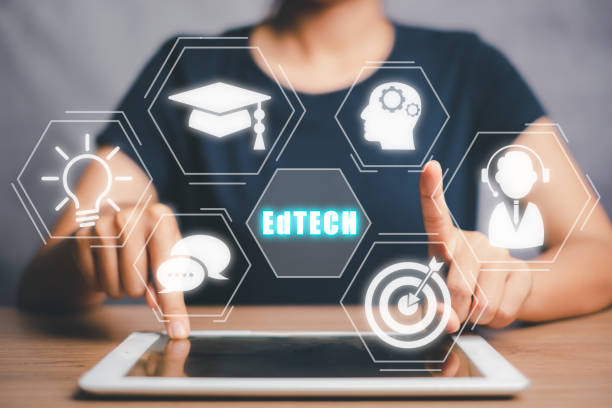Picture a space where innovators can try out new tools without fear of legal or regulatory penalty — somewhere they can test AI-powered tutoring systems, see where they excel, where they fail, and learn lessons before rolling them out widely. That’s the idea behind a regulatory or EdTech sandbox. It is a controlled, time-limited, supervised environment in which educational technology (especially AI) can be experimented with under rules that protect learners, teachers, and institutions.
In Nigeria, AI tutoring is showing enormous promise. Pilot studies have found that generative AI tutors, when used thoughtfully and with teacher support, help students learn English, digital skills, and the meta-skills of using technology. But there are also real risks: data privacy, bias, misuse, poor pedagogical design, unequal access, and unintended harm. A regulated safe space for testing can help manage those risks while unlocking the benefits.
Table of Contents

Existing Precedents and What They Teach Us
Before designing something new, it helps to look at what is already being done — what works, what doesn’t. Nigeria already has some regulatory sandbox frameworks, mainly in fintech. For example, the Central Bank of Nigeria (CBN) has a detailed Framework for Regulatory Sandbox Operations that allows fintech firms to test innovative products and services under lighter regulatory constraints, provided consumer protections and risk safeguards are put in place.
Also, the Nigeria Data Protection Commission (NDPC) has recently begun exploring “AI regulatory sandboxes” in collaboration with ICT firms, with the goal of integrating AI into data-protection law and practice. These are meant to promote trust, fairness, accountability, transparency — in short, ensure that innovation is responsible.
Beyond Nigeria, reports like the Africa Sandboxes Outlook by the Datasphere Initiative show that many African countries are using sandboxes to experiment across sectors. Fintech is the most common, but education, health, and climate tech are also beginning to feature.
These precedents tell us several things:
- The legal/regulatory framework matters: sandboxes have to be properly anchored so that participants know what they can and cannot do.
- Consumer/learner protection is non‐negotiable.
- The sandbox must involve multiple stakeholders: regulators, tech providers, educators, parents, and even students.
- Monitoring, evaluation and transparency are essential to draw lessons and adjust.
What Would a Regulated Safe Space for Testing AI Tutoring Look Like in Nigeria?
Drawing from both what exists now and best practices internationally, here are what I believe are key features for a truly effective national EdTech sandbox for AI tutoring in Nigeria.
- Legal foundation & regulatory oversight
The sandbox must be established under legislation or a formal regulatory instrument (not just guidance). It should define clearly who oversees what — probably a joint body involving education authorities (federal and state ministries of education), data protection regulators (NDPC), and possibly telecommunication/information oversight agencies. This oversight ensures accountability, especially when dealing with minors, sensitive data, or content. - Eligibility and application rules
Start-ups, EdTech firms, NGOs or institutions that want to test AI tutoring tools should be able to apply. To be eligible, they might need to show:- A pedagogical plan: how the AI tutor works, what subjects/age groups, and how it complements teachers.
- Technical readiness: evidence of usability, safeguards for data security and privacy.
- Risk assessment: what could go wrong (bias, error, misuse), and what mitigation exists.
- Scale plans: how they intend to scale or exit the sandbox if results are positive.
- Safeguards for learners, teachers and institutions
- Data protection: compliance with Nigeria’s Data Protection Act (NDPA), ensuring consent, minimal data collection, anonymisation, and secure storage.
- Quality & pedagogical soundness: involvement of pedagogues and cognitive science to ensure content is accurate, appropriate for age/level, and culturally relevant.
- Bias, fairness and inclusivity: testing AI’s performance across different regions, socio-economic backgrounds, languages, and genders.
- Teacher involvement: AI should support teachers, not replace them; there should be training and human-in-loop oversight.
- Mechanisms for complaints or harm redress: what happens if a student is harmed (educationally or otherwise) or their data is misused.
- Time-bound experiments & cohorts
Sandboxes should run in phases or cohorts — for instance, pilot for 3-6 months, then evaluation, then scale or refine. This helps limit exposure, makes learning manageable, and ensures timely feedback. - Metrics, monitoring and evaluation
Clear success (and risk) indicators are needed. For example:- Learning outcome gains (pre-/post tests).
- Student engagement/attendance/drop-out.
- User satisfaction (students, teachers).
- Ethical/compliance indicators (privacy incidents, bias, complaints).
- Cost & scalability.
- Exit strategy & scale-up plan
For projects that succeed, the sandbox must clearly define how to transition to regular deployment: meeting all regulatory obligations, obtaining necessary licences, ensuring sustainability, funding, and maintenance. Also, failure should yield clear learning and safe disengagement.

Challenges & Considerations — What Might Go Wrong, and How to Overcome Them
Designing and running a national EdTech sandbox for AI tutoring isn’t simple. Several potential problems must be anticipated.
- Regulatory fragmentation: Education is handled at both the federal and state levels in Nigeria. Similarly, data protection law, ICT regulation, and content oversight may span different jurisdictions. A sandbox must coordinate across these layers to avoid conflicts or gaps.
- Infrastructure disparities: Many parts of Nigeria have weak internet, limited device access,and unstable power. A pilot in Lagos or Abuja might do well, but rural or remote areas could struggle. Ensuring representativeness in pilot cohorts is crucial.
- Cost & funding: Running AI-tutoring services (even pilots) requires investment – both by innovators and possibly by government. Who bears costs for devices, connectivity, teacher training, and maintenance?
- Human capacity: Teachers, administrators, and regulators may not yet have a deep understanding of how AI works or its risks. Capacity building is necessary: training, workshops, participation.
- Unintended bias or harm: AI models often trained on large corpora may embed biases (linguistic, cultural, socio-economic). They may fail for minority languages or non-standard dialects. Vigilant testing across diverse users is essential.
- Public trust & ethical concerns: If parents or communities believe AI is being misused, or data leaks, or content is inappropriate, that could erode trust. Transparent communication, oversight, and accountability help build trust.
Path Forward: How Nigeria Can Make It Happen
To move from idea to effective implementation, Nigeria (government, private sector, EdTech community) should consider this road map:
- Establish a multi-stakeholder task force
Bring together the Federal Ministry of Education, state education ministries, NDPC, NITDA, telecom regulators, teacher unions, parent associations, and EdTech firms. The group’s task: design the sandbox framework. - Pilot in diverse regions
Pick states or schools across urban, peri-urban, rural settings; different language zones; different resource levels. This allows for learning about what works in each context and what adjustments are needed. - Set up legal instruments
Use or amend existing acts (like the NDPA) or regulations to enshrine the safe space, define obligations, legal protections, liability rules, and compliance expectations. - Develop technical & ethical guidelines
These should include standards for data protection, model transparency, bias mitigation, accuracy requirements, teacher roles, age-appropriateness, and localisation. - Ensure funding, incentives & support
Innovators need incentives — grants, subsidies, partnerships. Perhaps public-private financing or donor support. Also, support for hardware, connectivity, and teacher training. - Implement monitoring, open reporting & learning loops
Collect and publish data from the pilots; share lessons. Adjust the regulation or sandbox rules accordingly. Encourage feedback from students, teachers, and parents. - Plan scale-up and integration into policy
When pilots show success, plan for integrating successful AI tutoring tools under formal education policy: accreditation, teacher professional development, and budgeting.

Conclusion
Nigeria stands at a crucial moment. AI tutoring has shown real promise — boosting learning outcomes, narrowing gender gaps, and enabling self-paced and supplemental learning. But without caution, the risks — to learners’ data, to educational equity, to pedagogical quality — are real. A national EdTech sandbox tailored for AI tutoring offers a way to nurture innovation safely, to learn fast, to fail without catastrophic harm, and ultimately to scale what works.
If Nigeria gets this right, it will not only lead the continent in responsible AI in education — it will ensure that AI becomes a tool that enriches learning, closes gaps, and respects dignity. That is the vision a regulated safe space for testing AI tutoring that it should aim for.
Join Our Social Media Channels:
WhatsApp: NaijaEyes
Facebook: NaijaEyes
Twitter: NaijaEyes
Instagram: NaijaEyes
TikTok: NaijaEyes













![Mr Macaroni Drops Blistering Remark: ‘APC Filled with Most Corrupt People’ as He Slams Tinubu’s Controversial Pardon for Criminals=]] Mr Macaroni](https://naijaeyesblog.com/wp-content/uploads/2025/03/Mr-Macaroni-1-1-180x135.avif)

![Chaos Erupts in Abuja Hotel as BBNaija Star Phyna Sparks Fierce Scene Over Alleged N200,000 Dispute [VIDEO] Phyna](https://naijaeyesblog.com/wp-content/uploads/2024/11/A-Picture-of-Phyna-BBNaija-180x135.jpg)























